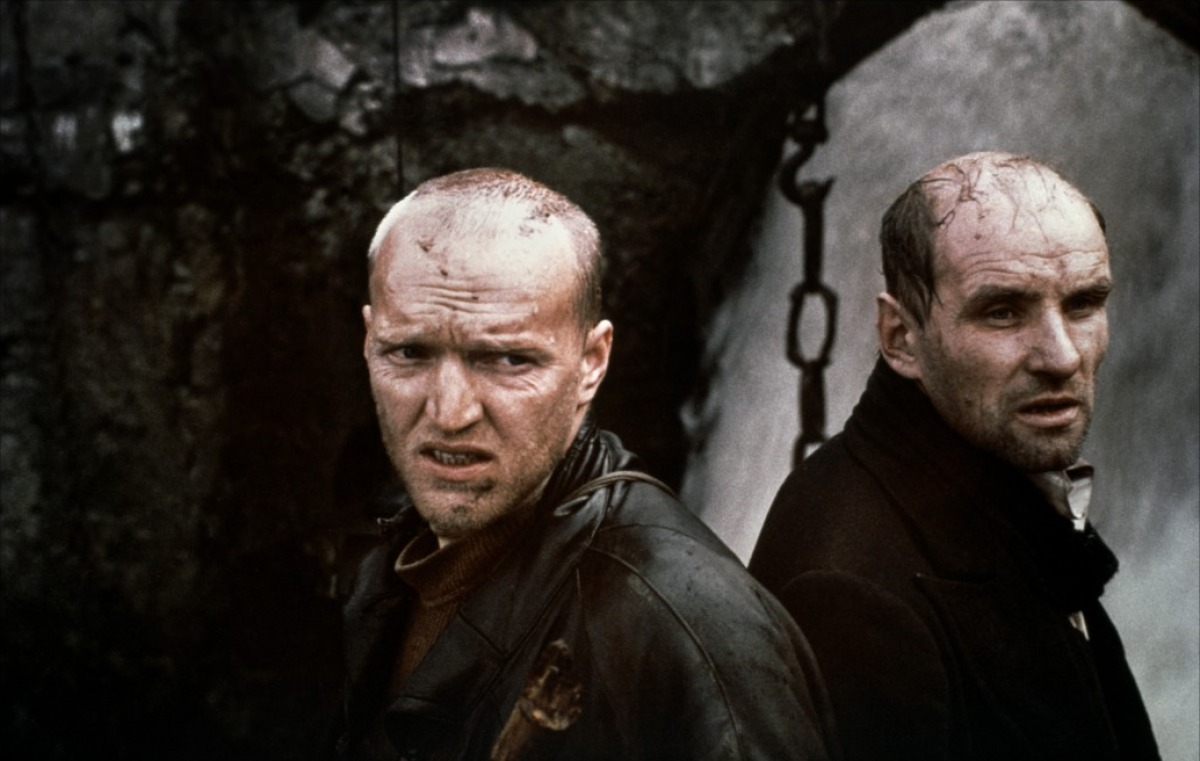
After the imaginative, innovative, free-spirited and progressive 1960s, the European cinema was ready to take the international stage in the way which had been promising to do since the 1950s.
In the US, the era known as The New Hollywood had finally brought that country into line with the movements which had originated in Europe and Asia in earlier years. New Hollywood was greatly influenced by these movements, especially the French New Wave and it was small wonder that the audiences for the New Hollywood films also found a place in their hearts with the mature and masterful films coming from Europe.
As it would happen, this would be both apogee and, in many ways, swan song for these marvellous years. The place foreign films would find not only in the art houses which had been their home for so many years but in more mainstream theaters would all too soon be gone with the rise of home video (which would allow the films to go into places they had never been before but in a far less grand manner).
Also, many of the great film makers of 1950s and 60s Europe would be entering their autumnal years and, for too many,the 70s would prove to be their last notable decade (and, in some cases, last decade period). There were also some newcomers of note. If it was the last great ride of the European cinema on an international scale then it was a good one.
1. The Conformist/The Spider’s Stratagem (1970)
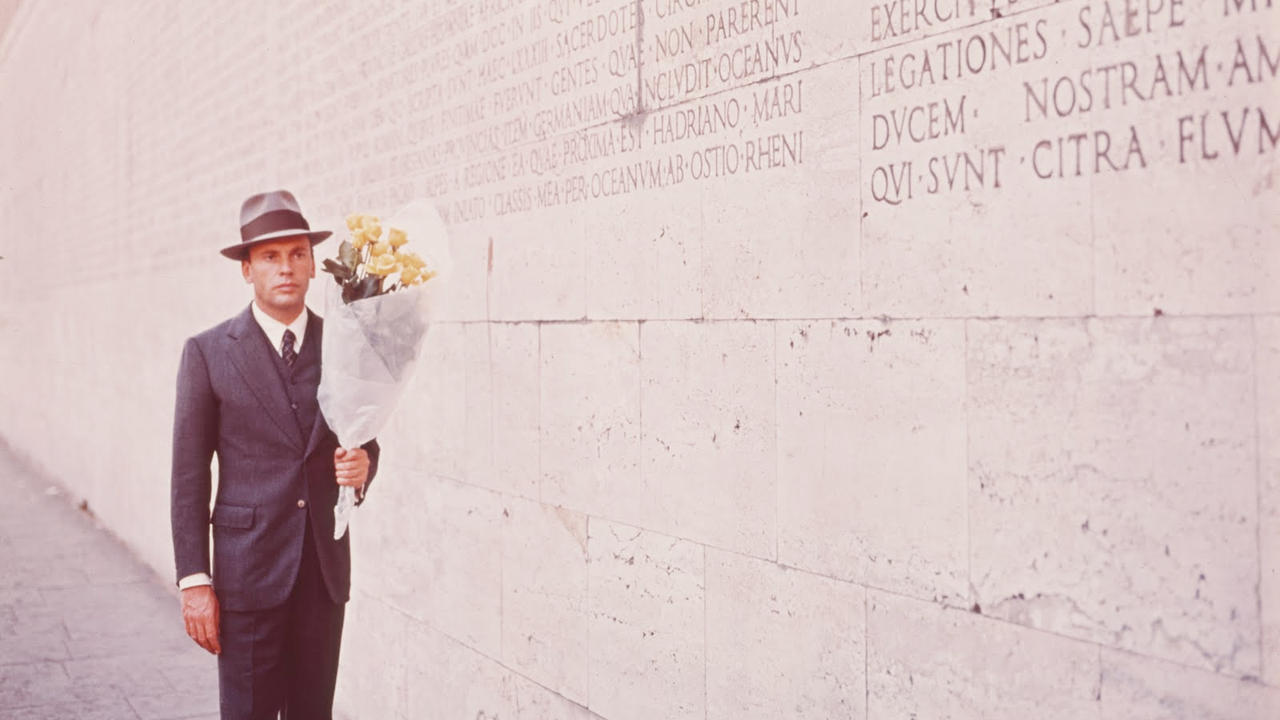
Bernado Bertolucci had been marked as a comer since the release of his debut, 1964’s Before the Revolution. However, 1970 would prove to be his breakthrough year due to his creating two distinctive films, still among his best efforts, within a short period of time. The first, and still more famous of the pair, is The Conformist, which was taken from a classic novel by Alberto Moravia.
The plot finds a pyschological mess of a man named Marcello (Jean-Louis Triganant, still on a great director/film roll) who is recruited by the immerging Fascists to become an assasin. He is given thesocial identity he has long desired but soons finds that his new happiness will come at a most disturbing price. The Spider’s Stratagem plays out almost as a sequel to the earlier film.
The plot of this film sees a young man in the then present day examining the supposedly heroic past of his late father during the World War II era only to discover that it was all a pack of lies coving up Fascist activity. Not surprisingly, the first film, more conventional and visually pleasing thanks to the wonderful 1930s-era art deco style and a superb job from cinematography Vittorio Storaro, was both the more popular and better remembered of the pair.
However, the later film, quite elliptical and experimental in nature, was also a towering achievement and helped to cement a critical reputation which would only grow throughout the decade and beyond.
2. Investigation of a Citizen Above Suspicion (1970)
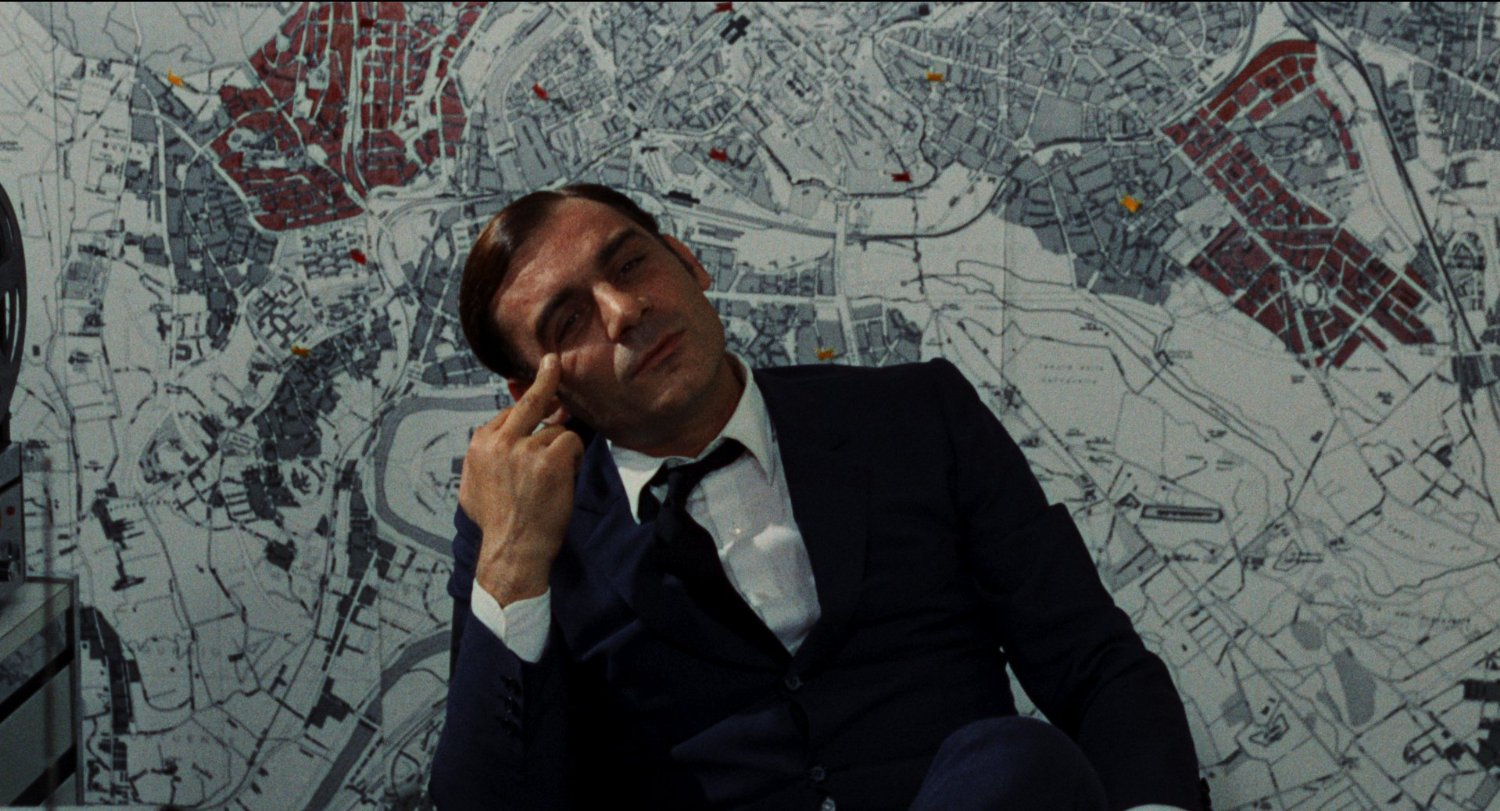
Much like Bertolucci, another young Italian director coming of age in the 1970s, Elio Pietri, seemed to be headed for the international big time. Sadly, his career and life would be foreshortened by cancer at an early age. However, he did have one big Oscar winning hit, for which he is still remembered.
At first glance, Investigation of a Citizen Above Suspicion seems to be one of the sort of clever suspense pieces which are always popular but which were having a particular moment at that time (think of the stage/film success Sleuth or the TV hit Columbo). A popular police official (Gian Maria Volonte) is promoted to the rank of inspector and assumes that the rank comes with privileges…such as killing off his the mistress (Florinda Balkan) who has become a millstone around his neck.
Initially he skillfully plants clues that will lead his co-workers to suspect first one innocent party then another. However, he starts to realize that there is no need to find a blameless scapegoat since he has become above the law in his part of the world. The remainder of the film tartly shows just how right the man will prove to be.
This film ends up becoming a trenchant black comedy with a point concerning corruption and the ability of humans to not see that which is inconvenient or disturbing to them. This was also the finest hour for Volonte, a movie star of long standing who proved that he could also act when given the opportunity.
3. Le Boucher (1970)
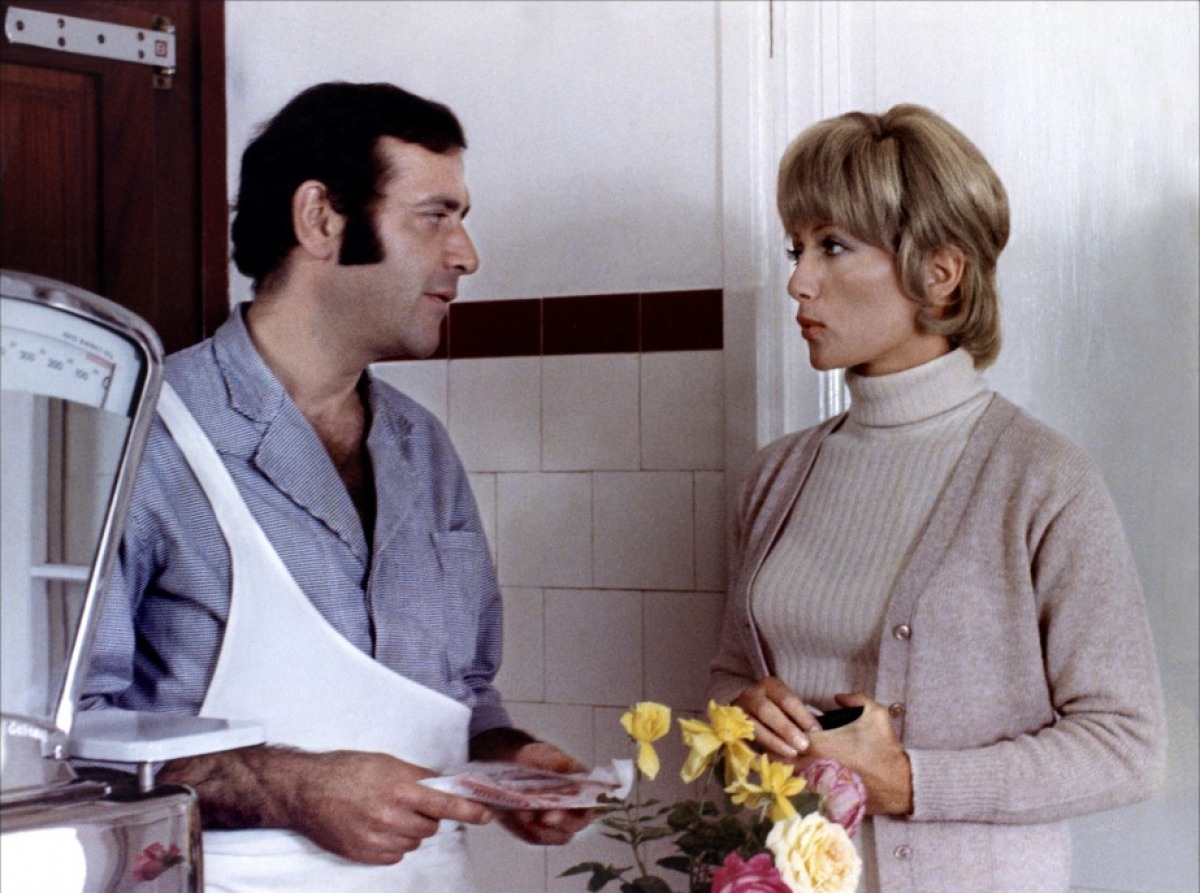
By the end of the 1960s, Cahier du Cinema critic turned suspense film maker Claude Chabrol had come to a polished pinnacle of his craft. His films were both popular and acclaimed, not only in his native France but abroad as well. Though he would work and have success until his death in the early 21st century, a good case could be made for the 1970s being his best decade. He got off to a superb start with what is still remembered as one of his best films, Le Boucher.
The film concerns a series of murders targeting young women plaguing a small town in France. One young woman feels more fear and concern than others but her reasons are most unusual.
Helene (the excellent Stephane Audran, Chabrol’s wife for around a decade during this period) is a very beloved school teacher but not the most worldly wise of women. She is engaged in a developing relationship with the local butcher, Propaul (Jean Yanne), also a combat veteran, who she begins to suspect of being the murderer.
This sounds like a conventional murder/suspense film except that its revealed early on the Propaul is the murderer but the twist is that Helene herself is a direct cause of why he’s committing the murders!
Chabrol invests the story with interesting observations about guilt and innocence and just why certain characters, both those considered the traditional villain and victims, behave as they do. That was consistently the trademark of Chabrol’s work. Whodunit was never as important as whydunit with this director.
4. Kes (1970)
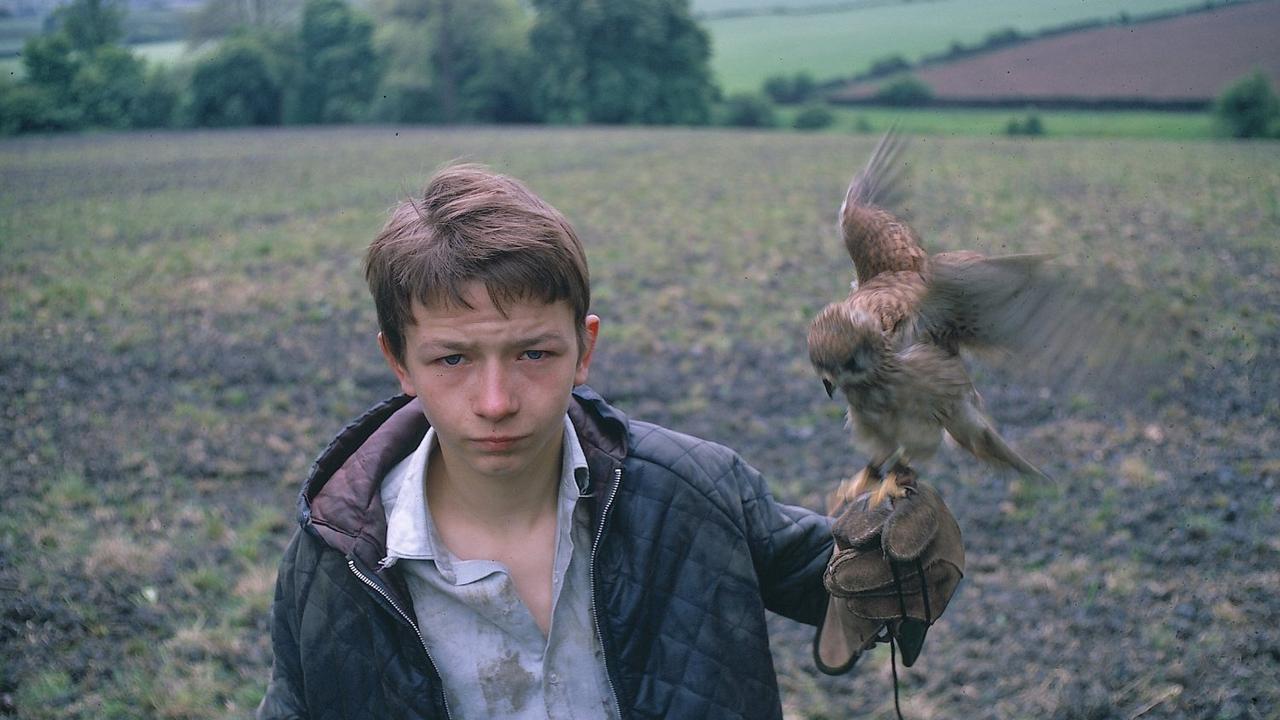
After the British “Kitchen Sink” period ended as such, too much reality had been introduced into that country’s cinema to allow a return to the old formal methods of film making and their usual emphasis on upper and upper middle class polite society. Though never among the most popular of directors with the paying audiences, there have been a number of brave directors who have detailed the lives of the working class poor in the U.K. with honesty and compassion.
Among the first of these was Ken Loach. Loach started his career in television (making a lot of waves with the realistic drama Cathy Come Home in 1966). He segued into big screen films at the end of the 60s and made a mark rather early with what is still considered one of his best and most remembered films, Kes.
The plot centers on Billy (non-professional actor David Bradley), a young North England boy living in conditions of extreme poverty compounded by abuse at home, at school and from the law, the later thanks to minor youthful run-ins with the authorities. A bright spot comes into his life when he finds a wounded kestrel and nurses it back to health and becomes interested in falconry.
It likes an inspirational picture from Disney studios, doesn’t it? Well, it isn’t as the story comes to a sad conclusion showing that the episode is only a brief illumination of a bleak life with little hope attached. (Underlining this is the fact that Bradley largely went back to such a life after the film came out.) Though not immediately hailed at the time of its release, the film built into a sleeper hit (in the U.K) and has since attained the status of a classic.
5. Le Cercle Rouge (1970)
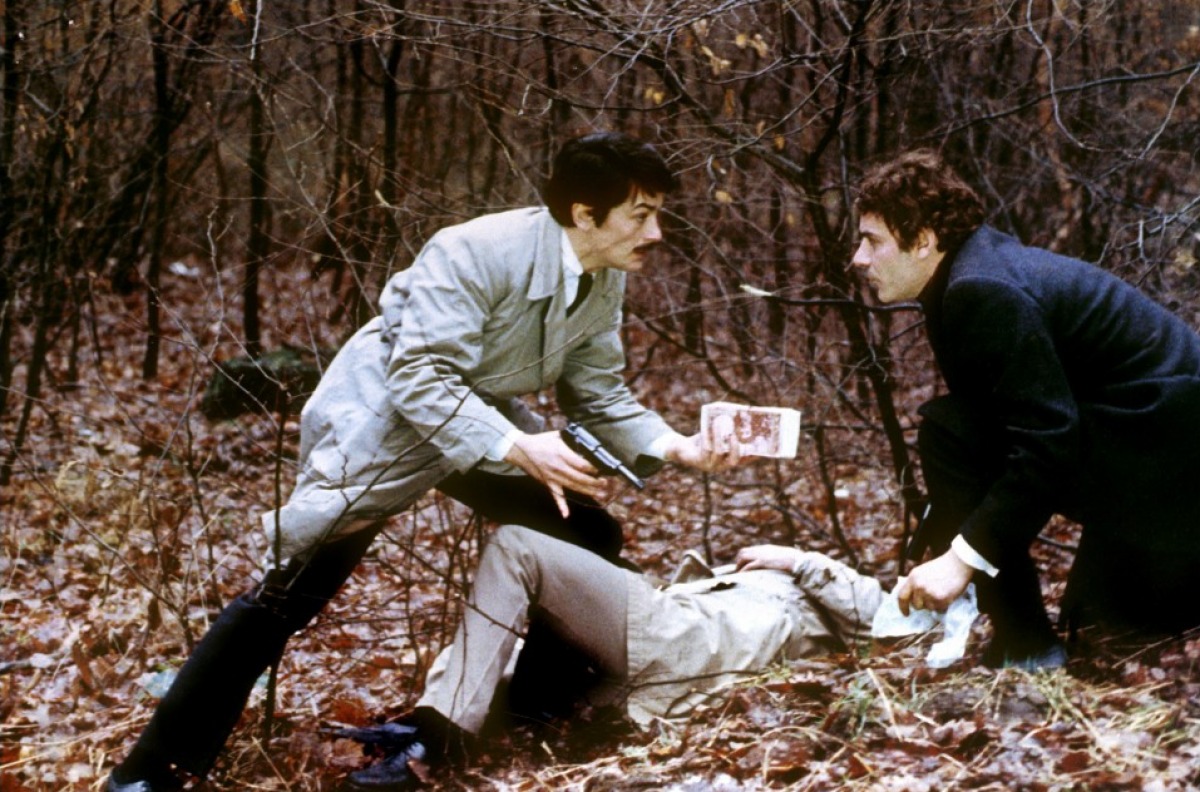
Of all the noted European directors of the post-World War II era, Jean-Pierre Melville may have the most interesting and dramatic personal story. He was an active participant in the French resistance movement during the war (the basis of his great 1969 film, Army of Shadows). He applied to study as an assistant director and was turned down for “lack of ability” and started to finance his own productions with work as an actor.
His first feature film, La Silence de la Mer, a war drama, was a critical hit, despite being made for almost nothing. He was given a big break when the great artist Jean Cocteau chose him to film the screenplay which became Les Enfants Terribles, a big all around hit.
After that, Melville, who took his professional name from the American author of Moby Dick, was able to make the kind of films which interested him, crime dramas. He would only live to age 54 and his score of films would be just considered pretty good in his own lifetime but how they have grown in stature since! Now such films as 1956’s Bob Le Flambeur, 1962’s Le Doulos, and 1967’s Le Samourai (along with Army of Shadows) are considered masterful classics.
Though his final film, 1972’s Un Flic, has its admirers, many more consider his penultimate film, Le Cercle Rouge to be his late masterpiece. The story is one quite familiar to devotees of the crime genre. A group made up of disparate men are joining together to plan a big robbery.
Yes, they will all have urgent motives, won’t be able to trust one another (and shouldn’t ), meticulously carry out the robbery (which, as ever with these films will take a silent 20 to 30 minutes of screen time) and the crime will be a big success…until other factors destroy the whole thing. This story has been retold ever since 1950’s The Asphalt Jungle but it always works in the hands of a competent director.
Melville, with his cool assurance and meticulous attention to detail, joined by a perfect cast including Yves Montand, Alain Delon (and Melville was one of the very few who could correctly use his Sphinx-like visage) and Gian Maria Volante, makes this one of the best versions ever. Kudos also go to the atmospheric color cinematography of Henri DeCae.
6. The Emigrants/The New Land (1971/72)
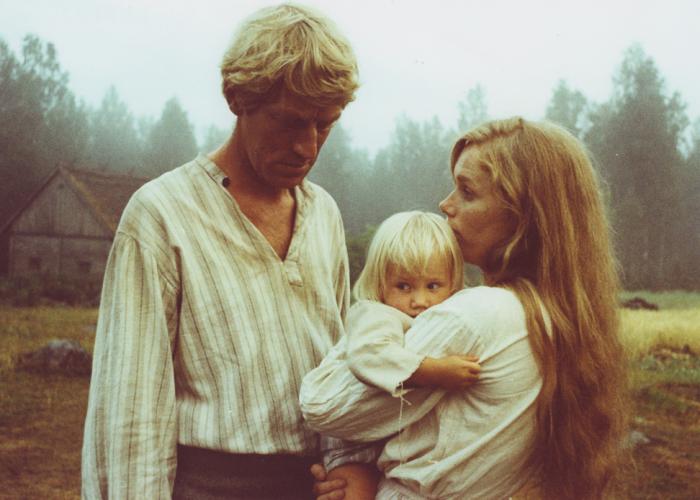
Ingmar Bergman had a major lock on the Swedish film industry’s critical reputation, certainly outside of Sweden itself. However, there were other fine film makers and not the least at all of these was Jan Troell. Troell was not only a director but a cinematographer and always shot his own films! He was also a most sensitive director with a sure grasp of character and relationships and an acute sense of dramatic unity.
Though he is still working (also making shorts and documentaries) he had his finest hour in the early Seventies with a pair of dramas which play like a great two part novel (from which source material they had been adapted). This was his monumental story of those souls who made the exodus from their homeland to North America.
This tale has been often told but virtually always from a US point of view with the home country an evil place and the US so wonderful that the new citizens kiss the ground of their golden new home. This version is way more realistic. Sweden depicted as a tough place, both in physical and political climate.
The Nilsson family (headed by Bergman regulars Max von Sydow and Liv Ullman, giving performances among their very best) works one of the worst farms known to mankind and their friends and neighbors are having social and legal troubles to a mighty degree. After a shattering personal tragedy, the Nilssons decide to try their luck in a new land with many of those in their circle joining them.
The passage to America via ship is no picnic and their eventual home of Minnesota (and points west for others in the group) will provide them more opportunity but will also prove to be no walk in the park nor exempt them from further tragedy.
The richness and sensitivity of the drama made it a hit in all the countries in which it played and both sections were nominated for the Best Foreign Film Oscar with the first film also being a Best Picture nominee as well as earning Ullman her first Best Actress nomination.
7. WR: Mysteries of the Organism (1971)

If anarchy and wild sexual behavior didn’t exist, would Yugoslavian (now Croatian) director Dusan Makavejev have had a career? Like many artists native to the former Soviet Block, Makavejev was often overtly political in his work but, in his case, this was married to a sense of sexual abandon combined with antic mayhem. His films are always comic but in a scathing, dark hued manner.
WR: Mysteries of the Organism is both his career high point and the film which made him defect and throw off the shackles of Soviet oppression. This is a very free form film built on themes from the work of controversial (and roguish) psychiatrist Wilhelm Reich (the WR of the title).
The film combines a lot of documentary footage and documentary-like recreation of sexual highlights in history with a fictional connecting story involving a young Yugoslavian beautician (who represents the true working class ideals),who falls in love with a skating champion (who represents Soviet dominated ideas).
There is lots of sex and its all about…something. Despite the lifting of censorship in the intervening years, this film is the product of a much freer and more expansive time. One of the few certainties in a shifting world is the fact that no Makavejev film will ever achieve universal popularity but he was a bold and inventive film maker and anyone who sees one of his films, especially WR, will know that they have seen something else indeed.